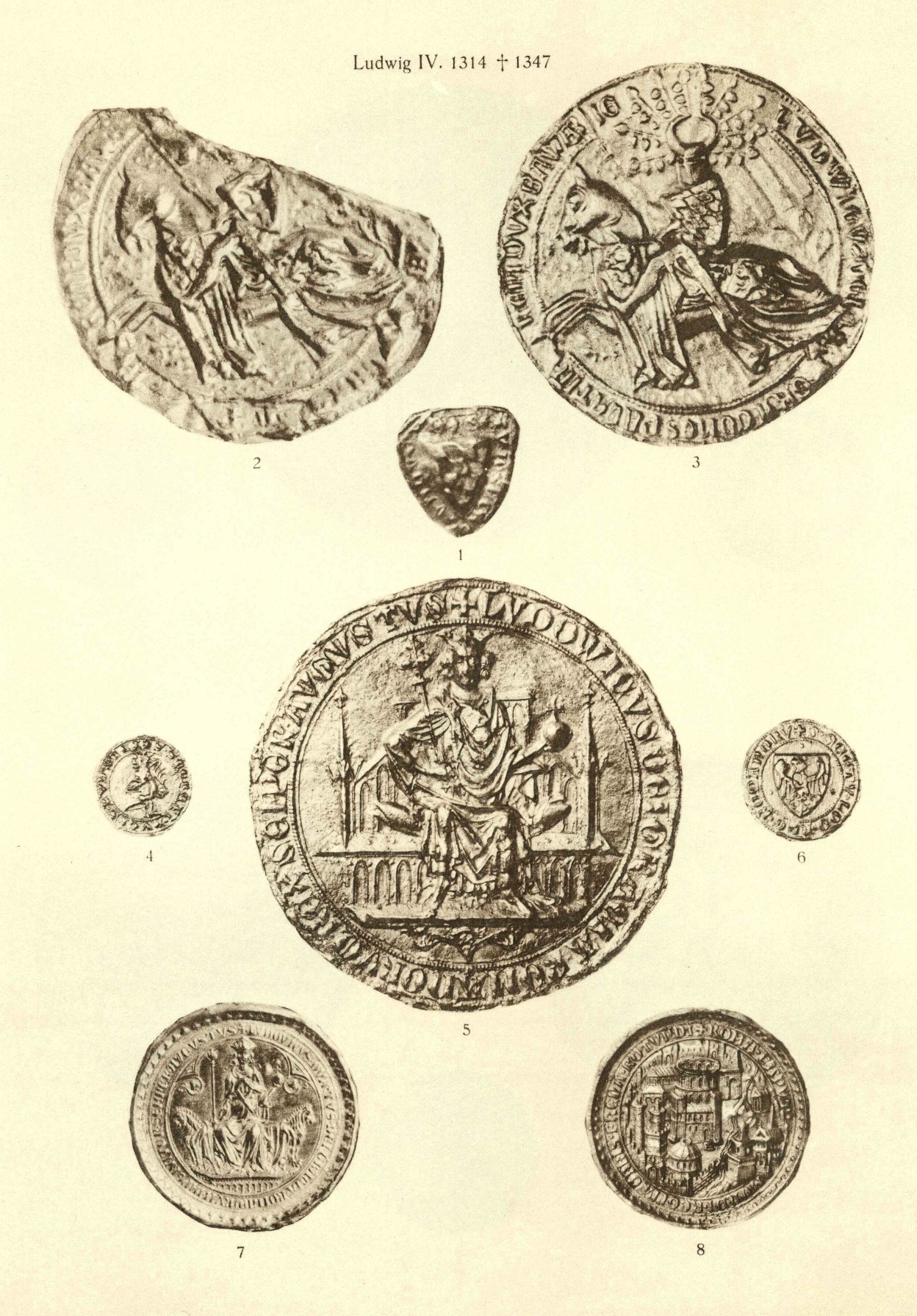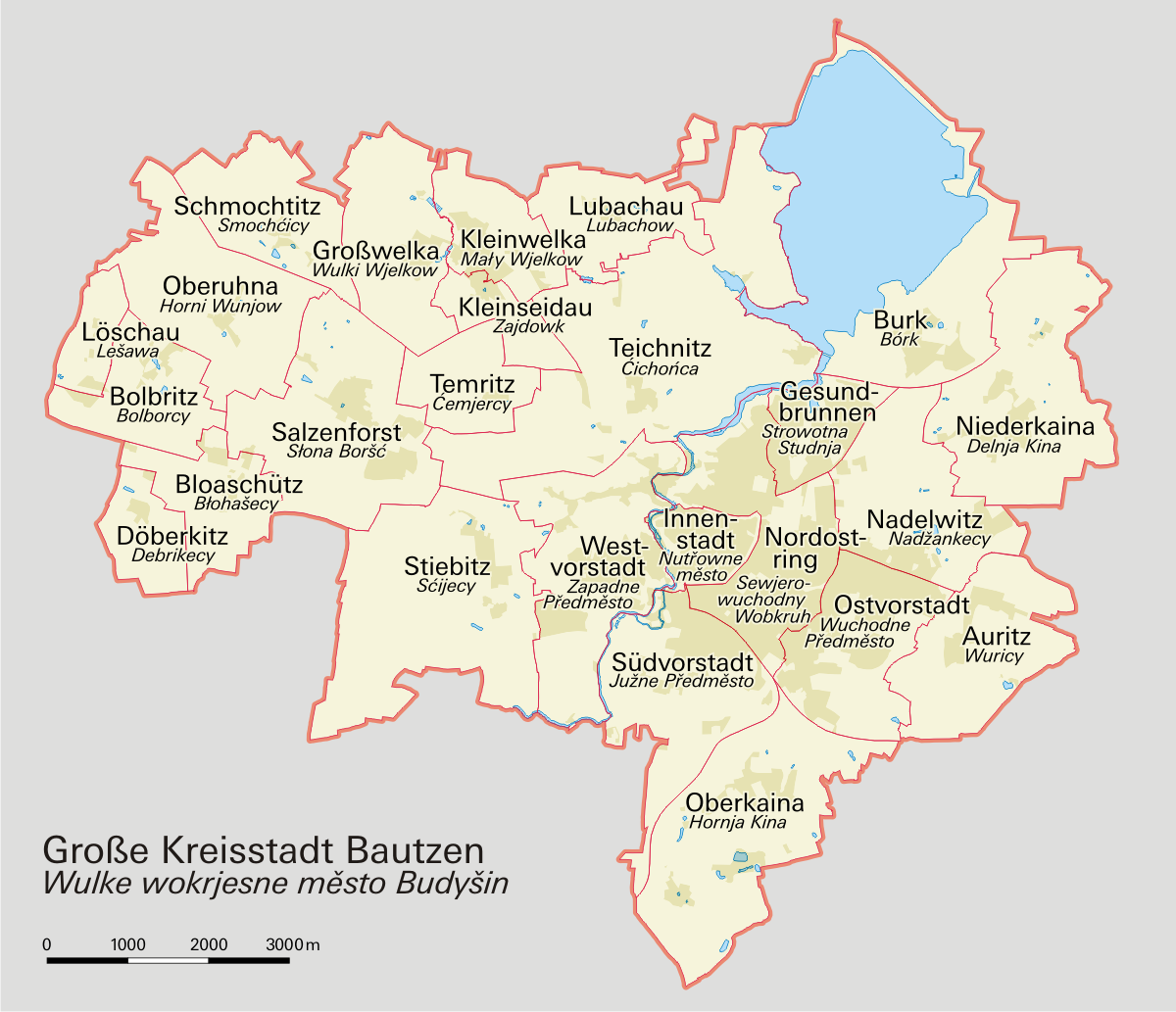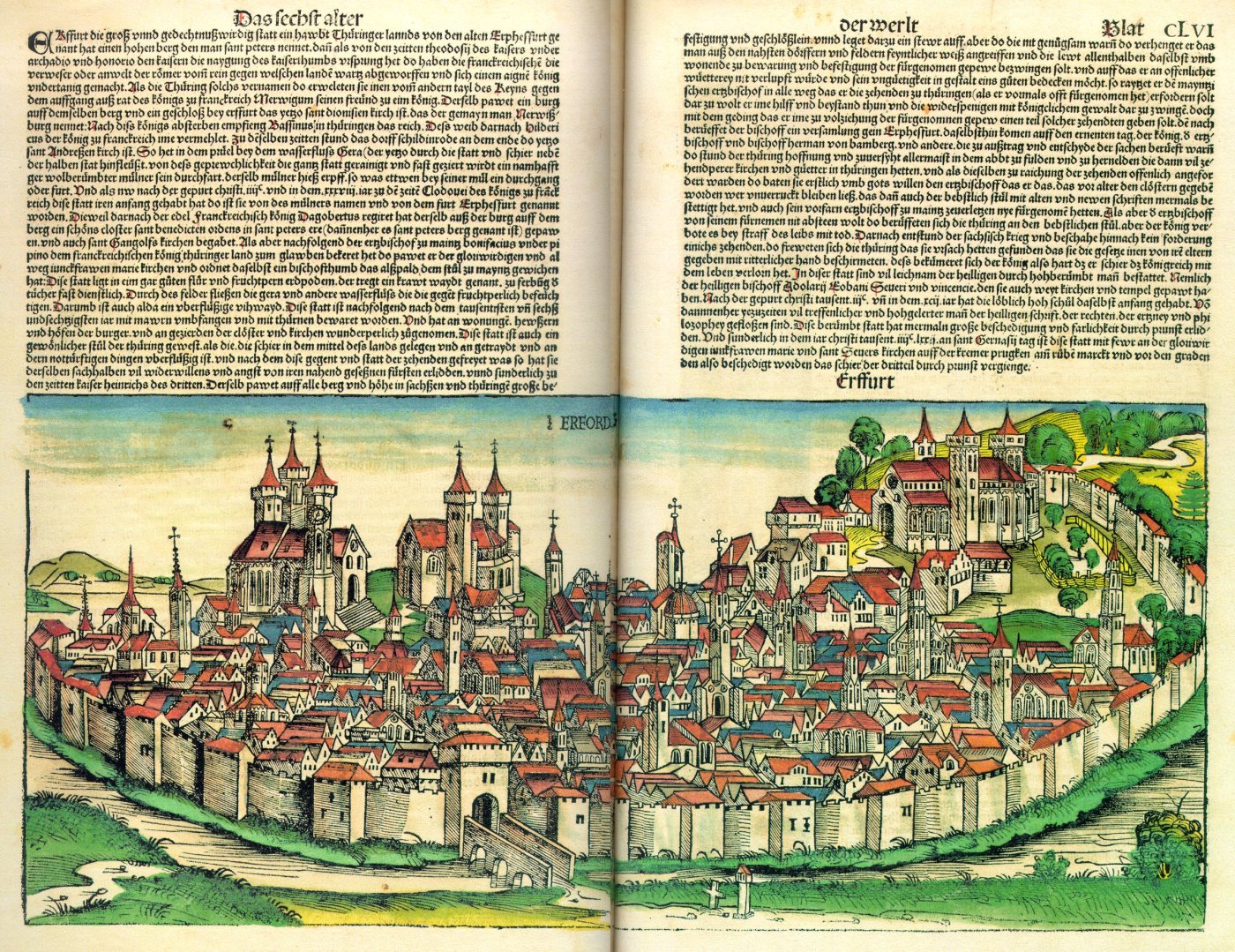|
Frederick II Of Meissen
Frederick II (; 30 November 1310 – 18 November 1349) was the margrave of Meissen from 1323 until his death. Early life Frederick was born on 30 November 1310 in Gotha. His parents were Margrave Frederick I of Meissen and Elisabeth von Lobdeburg-Arnshaugk. In 1323, under the guardianship of his mother, he succeeded his father in the Margraviate of Meissen and Thuringia. Personal rule After reaching the age of majority in 1329, he had to pass long-term fights with the vassals and neighbours. These conflicts mainly rose due to Frederick's declaration of peace in 1338, which drastically diminished the rights and influence of the small landlords and the local rulers, and which goal was the subjugation of the latter two groups. In 1342, dissatisfied nobles, whose concerns were their rights and independence, banded together in Arnstadt (southwest of Erfurt) against Frederick II, in what would be known as the Thuringian Count's War. The conflict would last up to 1346. After the dea ... [...More Info...] [...Related Items...] OR: [Wikipedia] [Google] [Baidu] |
Margrave Of Meissen
This article lists the margraves of Margraviate of Meissen, Meissen, a March (territorial entity), march and territorial state on the eastern border of the Holy Roman Empire. History King Henry the Fowler, on his 928–29 campaign against the Slavic Glomacze tribes, had a fortress erected on a hill at Meissen (''Mišno'') on the Elbe river. Later named ''Albrechtsburg'', the castle about 965 became the seat of the Meissen margraves, installed by Emperor Otto I, Holy Roman Emperor, Otto I when the vast ''Marca Geronis'' (Gero's march) was partitioned into five new margraviates, including Meissen, the Saxon Eastern March, and also the Northern March which eventually became the Margraviate of Brandenburg. During the tenth century, the Meissen margraves temporarily extended their territory into the Milceni lands up to the Kwisa (''Queis'') river and the border with the Silesian region of the Kingdom of Poland (1025–1385), Early Polish state. The eastern lands around Bautzen (''B ... [...More Info...] [...Related Items...] OR: [Wikipedia] [Google] [Baidu] |
Frederick V Of Nuremberg
Frederick V of Nuremberg (before 3 March 1333 – 21 January 1398) was a Burgrave (''Burggraf'') of Nuremberg, of the House of Hohenzollern. Life He was the elder son of John II, Burgrave of Nuremberg and Elisabeth of Henneberg. From the death of his father in 1357, Frederick bore the title of ''Burgrave'' and so was responsible for the protection of the strategically significant imperial castle of Nuremberg. His zeal in the imperial cause led Charles IV to elevate him in 1363 to be the first Burgrave of royal rank. After his death, his sons divided their inheritance. The eldest son, John III became the first Margrave of Brandenburg-Kulmbach. Johann's brother Frederick VI became the next Burgrave of Nuremberg as well as the first Margrave of Brandenburg-Ansbach. Frederick VI went on to become the first Hohenzollern Elector of Brandenburg. Family and children He married in 1356 Elisabeth of Meissen, daughter of Frederick II, Margrave of Meissen and Matilda of Bava ... [...More Info...] [...Related Items...] OR: [Wikipedia] [Google] [Baidu] |
Louis IV, Holy Roman Emperor
Louis IV (; 1 April 1282 – 11 October 1347), called the Bavarian (, ), was King of the Romans from 1314, King of Italy from 1327, and Holy Roman Emperor from 1328 until his death in 1347. 20 October 1314 imperial election, Louis' election as king of Germany in 1314 was controversial, as his House of Habsburg, Habsburg cousin Frederick the Fair was simultaneously elected king by a separate set of electors. Louis defeated Frederick in the Battle of Mühldorf in 1322, and the two eventually reconciled. Louis was opposed and excommunicated by the French Pope John XXII; Louis in turn attempted to depose the pope and install an anti-pope. Louis IV was Duke of Upper Bavaria from 1294 to 1301 together with his elder brother Rudolf I, Duke of Bavaria, Rudolf I, was Margraviate of Brandenburg, Margrave of Brandenburg until 1323, and Electoral Palatinate, Count Palatine of the Rhine until 1329, and became Duke of Bavaria, Duke of Lower Bavaria in 1340. He was the last Bavarian to be a ... [...More Info...] [...Related Items...] OR: [Wikipedia] [Google] [Baidu] |
Nürnberg
Nuremberg (, ; ; in the local East Franconian dialect: ''Nämberch'' ) is the largest city in Franconia, the second-largest city in the German state of Bavaria, and its 544,414 (2023) inhabitants make it the 14th-largest city in Germany. Nuremberg sits on the Pegnitz, which carries the name Regnitz from its confluence with the Rednitz in Fürth onwards (), and on the Rhine–Main–Danube Canal, that connects the North Sea to the Black Sea. Lying in the Bavarian administrative region of Middle Franconia, it is the largest city and unofficial capital of the entire cultural region of Franconia. The city is surrounded on three sides by the , a large forest, and in the north lies (''garlic land''), an extensive vegetable growing area and cultural landscape. The city forms a continuous conurbation with the neighbouring cities of Fürth, Erlangen and Schwabach, which is the heart of an urban area region with around 1.4 million inhabitants, while the larger Nurem ... [...More Info...] [...Related Items...] OR: [Wikipedia] [Google] [Baidu] |
Bautzen
Bautzen () or Budyšin (), until 1868 ''Budissin'' in German, is a town in eastern Saxony, Germany, and the administrative centre of the Bautzen (district), district of Bautzen. It is located on the Spree (river), Spree river, is the eighth most populous town in Saxony, and is the seat of Saxony's Bautzen (district), largest district. Bautzen lies in the bilingual Sorbian settlement area ('':hsb:Serbski sydlenski rum, Serbski sydlenski rum'') of Lusatia, and is Lusatia's third-largest town after Cottbus and Görlitz, as well as the second-largest town in Upper Lusatia. The town lies in the hilly Upper Lusatian Gefilde (:hsb:Hornjołužiske hona, ''Hornjołužiske hona''), a part of the northwesternmost foothills of the Sudetes, just north of the Lusatian Highlands. Bautzen is the first larger town on the Spree River (), and the Bautzen Reservoir (:hsb:Budyska rěčna zawěra, ''Budyska rěčna zawěra'') lies in the north of the town. In 2021, Bautzen had a population of around 3 ... [...More Info...] [...Related Items...] OR: [Wikipedia] [Google] [Baidu] |
Charles IV, Holy Roman Emperor
Charles IV (; ; ; 14 May 1316 – 29 November 1378''Karl IV''. In: (1960): ''Geschichte in Gestalten'' (''History in figures''), vol. 2: ''F–K''. 38, Frankfurt 1963, p. 294), also known as Charles of Luxembourg, born Wenceslaus (, ), was Holy Roman Emperor from 1355 until his death in 1378. He was elected King of Germany (King of the Romans) in 1346 and became King of Bohemia (as Charles I) that same year. He was a member of the House of Luxembourg from his father's side and the Bohemian House of Přemyslid from his mother's side; he emphasized the latter due to his lifelong affinity for the Bohemian side of his inheritance, and also because his direct ancestors in the Přemyslid line included two saints. He was the eldest son and heir of John of Bohemia, King of Bohemia and Count of Luxembourg, who died at the Battle of Crécy on 26 August 1346. His mother, Elizabeth of Bohemia (1292–1330), Elizabeth, Queen of Bohemia, was the sister of Wenceslaus III of Bohemia, W ... [...More Info...] [...Related Items...] OR: [Wikipedia] [Google] [Baidu] |
Emperor Louis IV
Louis IV (; 1 April 1282 – 11 October 1347), called the Bavarian (, ), was King of the Romans from 1314, King of Italy from 1327, and Holy Roman Emperor from 1328 until his death in 1347. 20 October 1314 imperial election, Louis' election as king of Germany in 1314 was controversial, as his House of Habsburg, Habsburg cousin Frederick the Fair was simultaneously elected king by a separate set of electors. Louis defeated Frederick in the Battle of Mühldorf in 1322, and the two eventually reconciled. Louis was opposed and excommunicated by the French Pope John XXII; Louis in turn attempted to depose the pope and install an anti-pope. Louis IV was Duke of Upper Bavaria from 1294 to 1301 together with his elder brother Rudolf I, Duke of Bavaria, Rudolf I, was Margraviate of Brandenburg, Margrave of Brandenburg until 1323, and Electoral Palatinate, Count Palatine of the Rhine until 1329, and became Duke of Bavaria, Duke of Lower Bavaria in 1340. He was the last Bavarian to be a ... [...More Info...] [...Related Items...] OR: [Wikipedia] [Google] [Baidu] |
Thuringian Count's War
The Thuringian Counts' War (), or Thuringian Counts' Feud (''Thüringer Grafenfehde'') was a conflict between several ancient aristocratic families and the House of Wettin for supremacy in Thuringia. The war lasted from 1342 to 1346. by Bogner, Franz Xaver. Retrieved 23 Dec 2014 The conflict is also called by various other names in English sources including War of the Thuringian Counts and Thuringian Comital War. In 1247, the last Thuringian landgrave from the House of the , [...More Info...] [...Related Items...] OR: [Wikipedia] [Google] [Baidu] |
Erfurt
Erfurt () is the capital (political), capital and largest city of the Central Germany (cultural area), Central German state of Thuringia, with a population of around 216,000. It lies in the wide valley of the Gera (river), River Gera, in the southern part of the Thuringian Basin, north of the Thuringian Forest, and in the middle of a line of the six largest Thuringian cities ('':de:Thüringer Städtekette, Thüringer Städtekette''), stretching from Eisenach in the west, via Gotha, Erfurt, Weimar and Jena, to Gera in the east. Together with Kassel and Göttingen, it is one of the cities with more than 100,000 inhabitants lying closest to the geographic centre of Germany. Erfurt is south-west of Leipzig, north-east of Frankfurt, south-west of Berlin and north of Munich. Erfurt's old town is one of the best preserved medieval city centres in Germany. The Gera (river), Gera is spanned by the Krämerbrücke, Merchants' Bridge (''Krämerbrücke''), one of the rare bridges with ho ... [...More Info...] [...Related Items...] OR: [Wikipedia] [Google] [Baidu] |
Arnstadt
Arnstadt () is a town in Ilm-Kreis, Thuringia, Germany, on the river Gera (river), Gera about south of Erfurt, the capital of Thuringia. Arnstadt is one of the oldest towns in Thuringia, and has a well-preserved historic centre with a partially preserved town wall. The town is nicknamed ("The Gateway to the Thuringian Forest") because of its location on the northern edge of that forest. Arnstadt has a population of approximately 27,000. Geography The town centre is on the west side of the River Gera. The municipality has absorbed several neighbouring municipalities: Angelhausen–Oberndorf (1922), Siegelbach (1994), Rudisleben (1999) and Wipfratal (2019). The neighbouring municipalities are Amt Wachsenburg, Alkersleben, Dornheim, Bösleben-Wüllersleben, Stadtilm, Ilmenau, Plaue and Geratal. Climate The annual precipitation averages 487 mm. History A deed of gift issued 1 May 704 in Würzburg by the Thuringian Duke Hedan II to the Anglo-Saxon bishop Willibrord of Archdioc ... [...More Info...] [...Related Items...] OR: [Wikipedia] [Google] [Baidu] |
Age Of Majority
The age of majority is the threshold of legal adulthood as recognized or declared in law. It is the moment when a person ceases to be considered a minor (law), minor, and assumes legal control over their person, actions, and decisions, thus terminating the control and legal responsibilities of their parents or guardian over them. Most countries set the age of majority at 18, but some jurisdictions have a higher age and others lower. The word ''majority'' here refers to having greater years and being of full age as opposed to ''minority'', the state of being a minor. The law in a given jurisdiction may not actually use the term "age of majority". The term refers to a collection of laws bestowing the status of adulthood. Explanation The term ''age of majority'' can be confused with the similar concept of the ''age of license''. As a legal term, ''license'' means ''permission'', referring to a legally enforceable right or privilege. Thus, the age of license for a specific activit ... [...More Info...] [...Related Items...] OR: [Wikipedia] [Google] [Baidu] |





